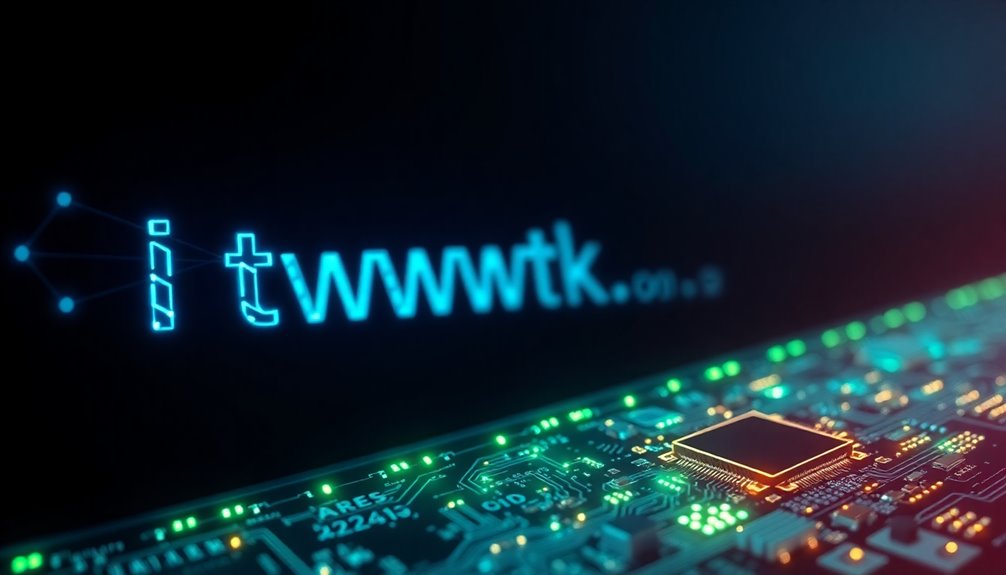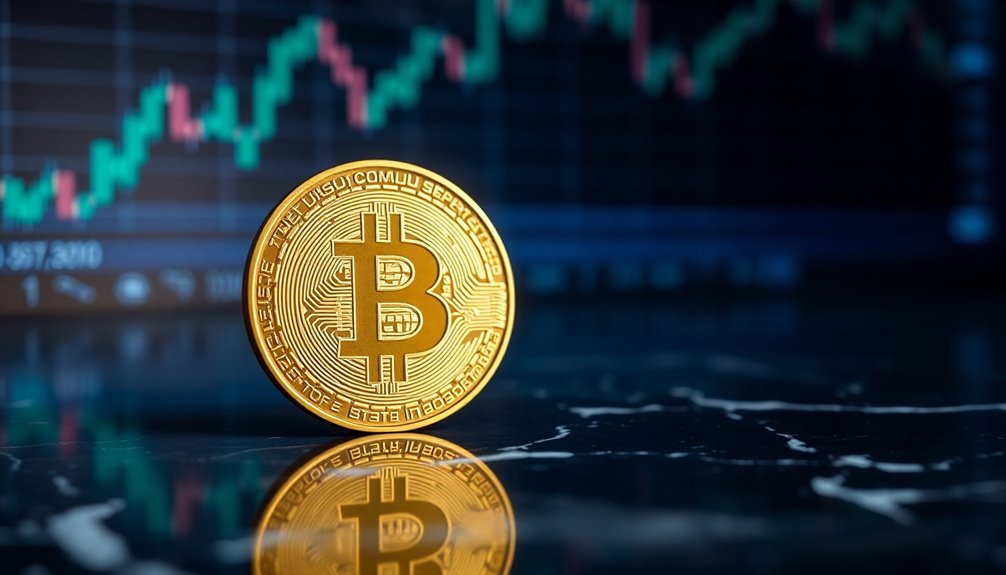Portal technology is transforming the crypto space by connecting over 40 blockchains, making it easy for you to interact across diverse ecosystems. With the Portal Wallet, you can manage your digital assets through a unified platform that supports multiple chains. This technology enables secure cross-chain asset transfers without wrapped tokens, streamlining your transactions. The PORTAL token serves as a universal currency for governance and transaction fees. However, you'll want to stay updated on security and community-driven developments. There's much more to explore about its features and benefits that could greatly enhance your crypto experience.
Key Takeaways
- Portal Technology connects over 40 blockchains, enabling seamless interaction and transactions across various platforms in the crypto space.
- The PORTAL token serves multiple purposes, including transaction fees, staking, and governance within the Portal ecosystem.
- Cross-chain asset transfers utilize atomic swaps, allowing secure exchanges without wrapped tokens, enhancing liquidity in decentralized finance.
- Community-operated Portal Nodes enhance network security and decentralization, rewarding operators with PORTAL tokens for their participation.
- Omni-chain integration simplifies digital asset management, fostering an improved user experience across diverse blockchain networks.
Core Features Overview
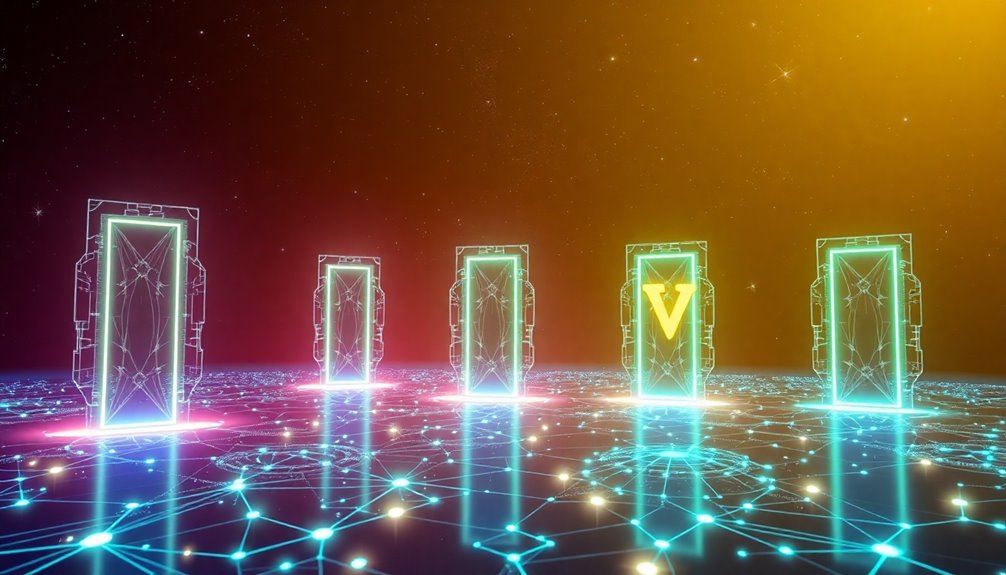
When you dive into the Portal technology, you'll quickly notice its core features designed for a seamless gaming experience across multiple blockchains.
The platform connects over 40 blockchains, including Ethereum, Polygon, and Solana, enabling access to more than 200 games. At the heart of this ecosystem is the PORTAL token, which plays a vital role in transaction fees, staking, and governance.
The user-friendly Portal Wallet supports multi-chain addresses, simplifying your entry into Web3 gaming. Plus, with Portal Pay, you can make in-game purchases using various cryptocurrencies, enhancing your overall engagement.
Community-operated Portal Nodes ensure transaction security, rewarding operators with PORTAL tokens, and facilitating decentralized operations.
This combination makes Portal an exciting space for gamers and developers alike.
Omni-Chain Integration Explained

Portal's omni-chain integration significantly enhances the gaming experience by allowing seamless interactions across over 40 blockchains, including Ethereum, Polygon, Solana, and Avalanche.
This integration relies on the LayerZero messaging protocol, which enables real-time communication and transactions between different networks without intermediaries.
As a user, you'll find managing your digital assets easier with the Portal Wallet, which supports multi-chain addresses, streamlining transfers and interactions.
PORTAL tokens act as a universal currency within this ecosystem, facilitating in-game transactions, staking, and governance across multiple platforms.
Cross-Chain Asset Transfers Explained
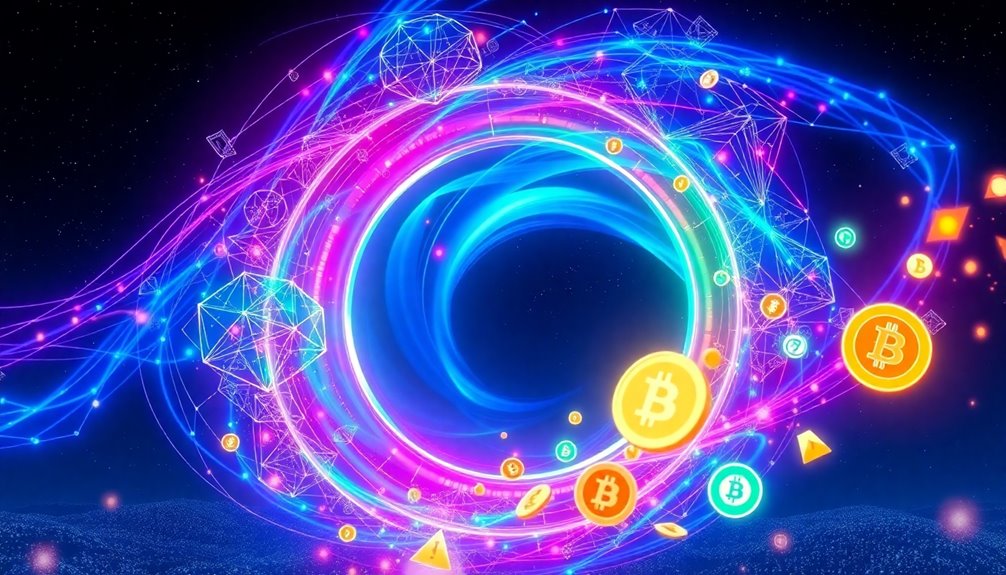
Cross-chain asset transfers revolutionize how you interact with cryptocurrencies by allowing you to swap assets across different blockchain networks without relying on wrapped tokens.
With Portal's use of atomic swaps and Multi-Party Hash Time-Locked Contracts (MP-HTLCs), you can securely lock funds on one blockchain while creating a matching contract on another. This ensures a trustless exchange, minimizing custodial risk.
The Automated Dynamic Market Maker (ADMM) optimizes your cross-chain transactions, functioning like Uniswap v3 to lower costs and enhance efficiency.
By facilitating peer-to-peer swaps without intermediaries, Portal not only boosts liquidity but also enhances your security in cross-chain transactions.
This integration opens up new possibilities, especially for tapping into Bitcoin's potential in decentralized finance (DeFi).
Benefits and Drawbacks

While exploring the benefits and drawbacks of interoperability in the crypto space, you'll quickly notice that the advantages often outweigh the challenges.
Portal's use of LayerZero technology allows seamless interaction across over 40 blockchains, enhancing your experience and creating diverse gaming ecosystems. The decentralized security model, featuring community-operated nodes for transaction validation, not only secures the network but also rewards operators with PORTAL tokens, incentivizing participation.
Additionally, the PORTAL token serves as a universal currency for transactions, staking, and governance, promoting a unified economic system.
However, the multi-chain architecture can complicate user onboarding and transaction management, which might deter less experienced users from fully engaging with the platform.
Balancing these factors is key to maximizing the benefits of interoperability.
Cross-Chain Interoperability Advantages
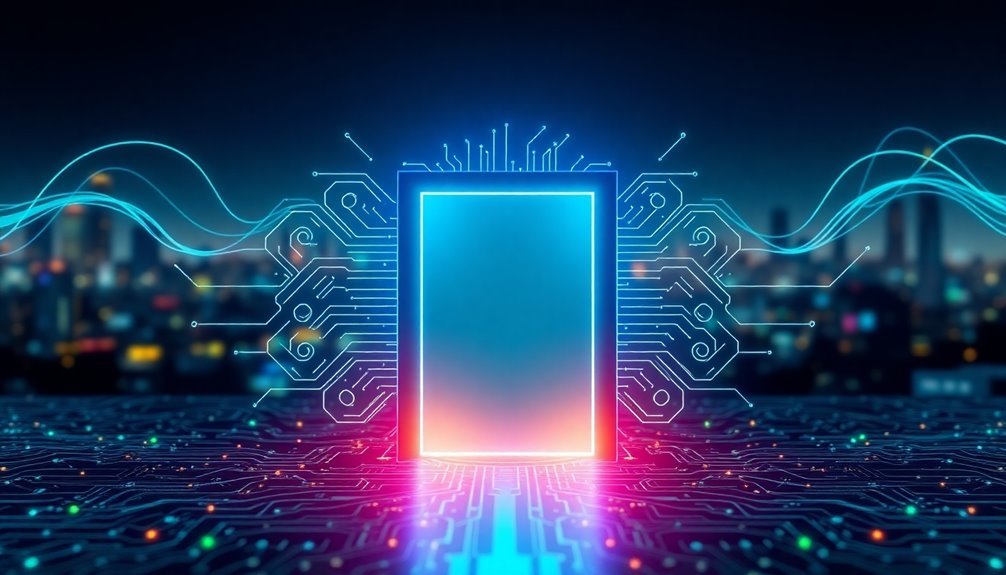
Interoperability opens up a world of advantages in the crypto space, particularly for users seeking a more integrated experience.
With Portal's cross-chain interoperability powered by the LayerZero messaging protocol, you can seamlessly interact across over 40 blockchains like Ethereum and Solana.
Utilizing atomic swaps through Multi-Party Hash Time-Locked Contracts (MP-HTLCs), you can swap native Bitcoin without needing wrapped assets, enhancing security and minimizing custodial risks.
This platform also connects more than 200 integrated games, reducing fragmentation and providing a unified experience.
By enabling peer-to-peer, cross-chain swaps without intermediaries, Portal allows you to streamline digital asset transactions while reducing risks.
Plus, the upcoming bridge to Solana in 2025 promises even greater opportunities for using PORTAL tokens across networks.
Security Vulnerabilities in Integration

As you explore the integration of blockchain technologies, it's crucial to be aware of potential security vulnerabilities that can arise.
Improper handling of cryptographic keys can expose user assets to theft or loss. Additionally, relying on third-party libraries for blockchain interactions may increase the risk of exploiting known vulnerabilities, jeopardizing the integrity of transactions.
Cross-chain protocols, like Portal-to-Bitcoin, face unique challenges, especially with atomic swaps that, if executed incorrectly, can lead to lost funds. To combat these risks, regular audits by industry experts, such as those from NCC Group, are essential.
Moreover, the complexity introduced by multi-party protocols, like Multi-Party Hash Time-Locked Contracts (MP-HTLCs), necessitates proper implementation and monitoring to avoid security oversights.
Emerging Cross-Chain Protocols
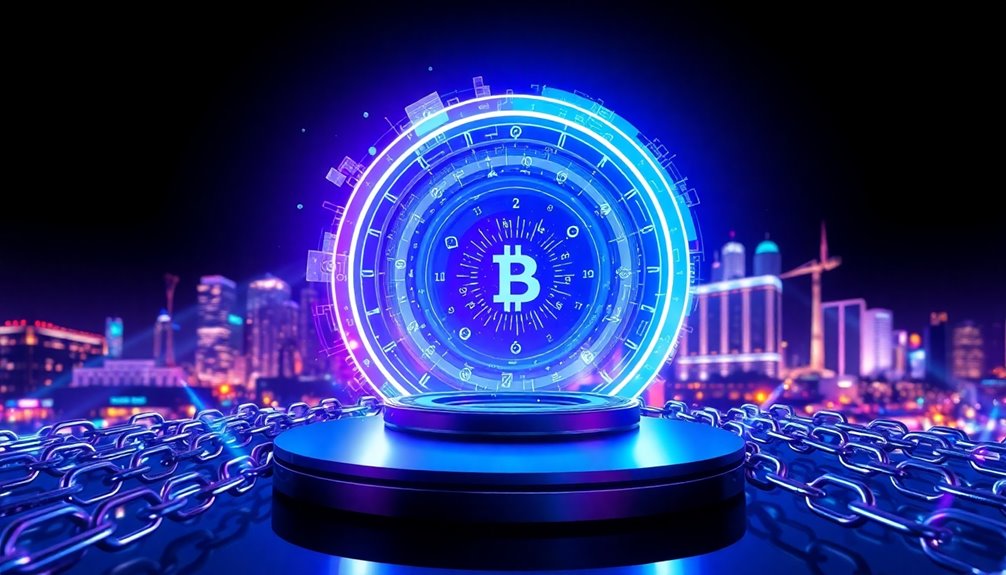
Emerging cross-chain protocols are revolutionizing how you interact with various blockchain networks, enabling seamless transactions without the need for wrapped assets.
For instance, the Portal-to-Bitcoin protocol uses atomic swaps and Multi-Party Hash Time-Locked Contracts (MP-HTLCs) to facilitate native Bitcoin swaps across diverse platforms. This innovation enhances cross-chain interoperability, vital for the decentralized finance (DeFi) space.
By leveraging Automated Dynamic Market Makers (ADMM), similar to Uniswap v3, Portal optimizes cross-chain transactions and boosts liquidity management.
As Portal aims to capture a share of Ethereum's substantial market, it's driving significant developer activity in the Bitcoin Layer 2 ecosystem, showcasing Bitcoin's potential to transform into a more versatile asset in the crypto landscape.
Leverage Community-Driven Development

The growing importance of cross-chain protocols naturally leads to a focus on community-driven development within the Portal ecosystem.
By operating community-operated nodes, you can directly validate transactions and boost security while earning PORTAL tokens for your contributions. This collaborative approach fosters a sense of ownership among participants, making your feedback crucial to Portal's governance model.
As a token holder, your voice shapes the platform's future, influencing new features and enhancements. Moreover, your involvement not only strengthens security but also aids game developers in discovering and integrating innovative games across the multi-chain landscape.
With decentralized infrastructure, Portal thrives on diverse participation, ensuring a robust network that benefits everyone. Engage and help shape the future of Portal! Additionally, leveraging data analytics can enhance decision-making and further improve the community's contributions.
Frequently Asked Questions
What Technology Is Used in Crypto?
In crypto, you'll find blockchain technology at the core, acting as a secure, transparent ledger for transactions.
Smart contracts automate agreements directly into code, ensuring compliance without intermediaries.
You might also notice layer-2 solutions that boost transaction speed and cut costs.
Additionally, cross-chain protocols enable different blockchains to communicate, while cryptographic techniques keep your transactions and wallets safe from unauthorized access.
Together, these technologies create a robust crypto ecosystem.
How Many Portal Coins Are There?
Think of the total supply of PORTAL tokens like a treasure chest, with one billion coins locked inside.
Right at launch, you'll find 167 million of those tokens already in circulation. A significant amount's been set aside for the team and treasury, ensuring the project's growth and sustainability.
As the ecosystem expands, the distribution and availability of these tokens might shift, but the total supply remains capped at that billion mark.
Who Is the Owner of Portal Coin?
You might find it tricky to pinpoint a single owner of Portal Coin, as the ownership structure isn't clearly defined.
Most of the tokens are allocated to the team and treasury, indicating strong involvement from the founding members.
However, since Portal operates as a decentralized platform, ownership is likely shared among community members and node operators, allowing active participants to have a stake in the ecosystem and influence its governance collectively.
What Chain Is Portal On?
Isn't it ironic how you're searching for what chain Portal's on when it's actually on multiple chains?
Portal integrates over 40 blockchains, like Ethereum, Polygon, Avalanche, and Solana, creating an expansive, interconnected network.
This means you're not limited to just one chain; instead, you can enjoy a seamless gaming experience across various platforms.
Conclusion
As you dive into the world of portal technology in crypto, remember it's like navigating a vast ocean—full of opportunities and hidden challenges. Embracing omni-chain integration and cross-chain transfers can unlock new horizons for your assets, but staying vigilant about security is crucial. The benefits can be immense, yet the risks linger like shadows beneath the waves. With community-driven development paving the way, now's the time to chart your course and seize the promise of a connected blockchain future.


